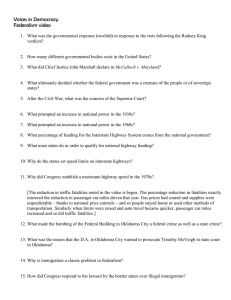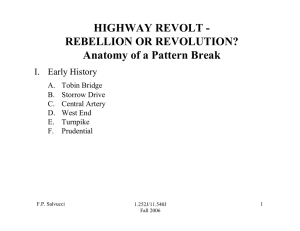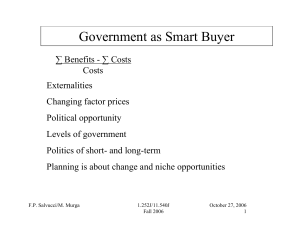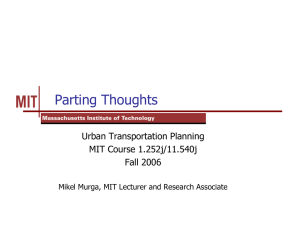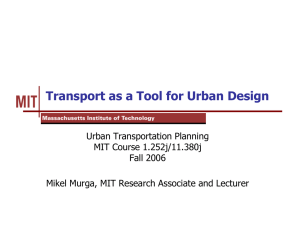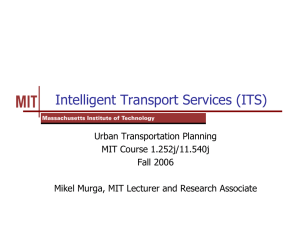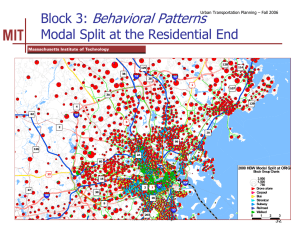Document 13497070
advertisement
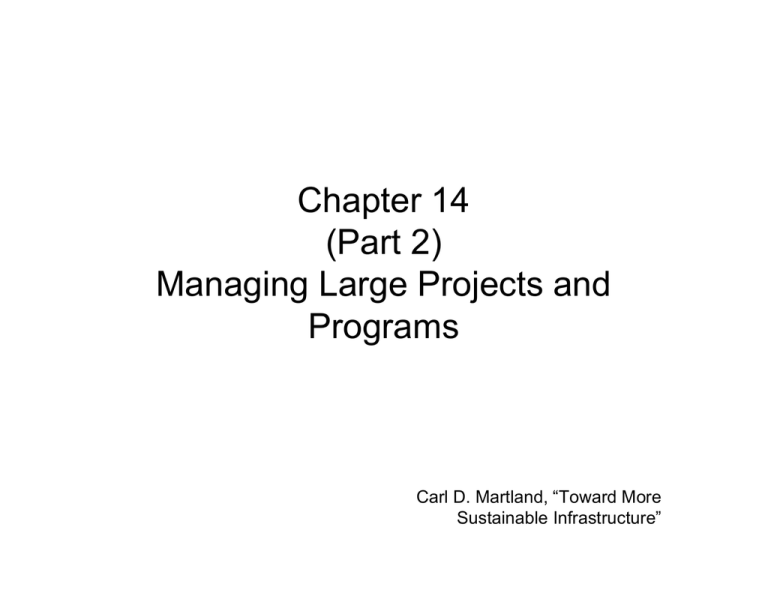
Chapter 14 (Part 2) Managing Large Projects and Programs Carl D. Martland, “Toward More Sustainable Infrastructure” Additional Requirements for Managing Very Large Projects • • • • Overall project coordination Political coordination Public relations A capable, diverse management team These projects may take decades to complete! Six Phases of Very Large Projects Phase Major Activities 1 Pre-History Serious problems generate public concern, debate over problem definition, and search for possible solutions 2 Conceptualization, Evaluation, and Planning Define and analyze various possible solutions; environmental impact assessment; develop financing plans 3 Procurement Create management team; acquire land; deal with socio-economic issues 4 Final Design Transform conceptual design into detailed designs as basis for construction contracts 5 Construction Manage and oversight of construction 6 Operation Operation and maintenance of project; land use changes and socio-economic impacts Source: Frederick Salvucci, lecture to 1.011 Project Evaluation, 2002 Thinking About Very Large Projects • First think about doing the right job – then think about doing the job right • Recognize that a long time will be needed in the conceptualization phase • Be flexible in developing hypotheses and in the use of screening analyses • Interact with and involve a lot of people, because both knowledge and power are distributed • EIS is critical in highlighting issues and allowing a better, more broadly conceived and more beneficial project than was originally anticipated Source: Frederick Salvucci Program Management • A program can be created to promote, implement, and monitor the performance of a set of related projects • A program consists of: – Policy: defining objectives and types of projects that can be funded – Selection criteria – Funding – Construction Standards – Program management process Program Management Process • Once a program is established, it is much quicker to identify, select, and implement projects • However, it is also more difficult to challenge or revise projects • A continuing program management process is necessary: – Project audits – Polity review – Review of externalities – Revision of program policy, criteria or funding The Interstate Highway System • Begun in 1956 after two decades of debate over how best to create a system of limited access, high quality roads • Benefits for autos and trucks widely distributed, clearly apparent to public and state and federal government • Issues – Network structure – Funding (tolls vs. taxes and fees vs. capturing the increased land values created by the project) – Construction standards – Routing through cities (straight routes vs. routes that minimize disruption to neighborhoods) – Use of highway investment to address other problems The Interstate Highway System: Problems • Disruption to cities sparked opposition that put some urban segments underground and eventually stopped construction of planned routes in Boston and San Francisco • This INTERCITY transport system was heavily used for COMMUTING, sparking suburbanization and accelerating the decline of many urban centers • Other social concerns have led many to question the public emphasis on highways: – Highway safety – Congestion – Air quality – Climate change – Over-dependence upon fossil fuels Franconia Notch, NH Rare instance of 2-lane interstate was allowed (after intensive battle) in order to avoid destroying center of state park Triple transport tiers in a gorge – interstate plus bike path on opposite side of river from Amtrak (Colorado) MIT OpenCourseWare http://ocw.mit.edu 1.011 Project Evaluation Spring 2011 For information about citing these materials or our Terms of Use, visit: http://ocw.mit.edu/terms.



